– By Siddhi Anand Lodha
The Internet has become the second life of every person. This is possible because of open access to the Internet and a remarkably cheap cost to enter cyberspace. The sheer scale and reach of the Internet has made it a powerful weapon. It has been a great equalizer that guarantees freedom of speech irrespective of class, creed, or geography. Actors- even individual actors have the power to influence this cyberspace due to its reach and magnitude. The best example is social media. Social media platforms are spaces where there is a garb of free speech. Along with numerous benefits of the Internet, it can be put to bad use as well.
Innovations and freedom cannot thrive in a chaotic environment with rampant crime and a lack of rules, norms, and ethics. This makes Cyberspace prone to cybercrimes such as money laundering, sexual exploitation, illegal access to electronic information, the creation of harmful computer viruses, and the like. The increased use of cyberspace has also given way to more innovative and sophisticated cybercrimes. India has seen a rise in cybercrimes against women between 2018 to 2020 according to the National Crime Record Bureau (NCRB). The cases lodged for sexually explicit content increased 110% from 6,308 to 3,076. Harassing women on social media on the grounds of religion has lately been a trend in cybercrime. This blog concerns cyber crimes against women.

STORY OF BULLI BAI
During this New Year-2022, some prominent Muslim women in India faced threat, trauma, and indignity as they were been targeted by an app named ‘Bulli Bai’. The app was seen doing the inhuman act of auctioning Muslim women as maids and using their photos from their social media accounts without their permission. Their photos were titled with the phrase “The Bulli Bai of the day is…”. Such an act was not the first instance of the occurrence. In 2021, an app named Sulli Deals had hosed doctored photographs of hundreds of Muslim Women for auction. These women were mostly the ones who were politically vocal and against all forms of patriarchy. Both these apps cherry-picked these women and targeted them in front of the world audience.
These apps were an assertion of power and an attempt to humiliate these women emotionally and morally. They are an example of how technology is being used with speedy ease and little expense to put women at risk of online abuse, theft of privacy, or sexual exploitation. Overall, women have a risk online due to incidents of trolling, doxing with personal details, surveillance cameras, location tracking or pornographic videos, and the use of doctored images.
PAST AND EXISTING LAWS ON HATE SPEECH FOR ONLINE CONTENT
The creation of the Bulli Bai and Sulli Deals app is an example of Digital hate which comes under Hate Speech. In India, hate speech is not profusely restricted. It remains undefined with appropriate IT Act provisions or regulatory mechanisms for online content. These absent mechanisms are misused by some people and used to incite anger or divide communities without being threatened by any liability.
Previously, Section 66A of the Information Technology Act, 2000 made it a punishable offense for any person to send ‘grossly offensive’ and ‘menacing’ information using a computer resource or communication device. This law seems good at the face level. However, this Section empowered the police to make arrests over the subjective discretion of what ‘offensive’ and ‘menacing’ meant for causing annoyance or inconvenience. The Section was vague. The Act was made to prevent the misuse of Information Technology. However, due to the vagueness, the law became a potential tool to gag legitimate free speech online and to curtail freedom of speech and expression online. Therefore, Section 66A of the Information Technology Act, 2000 was struck down as unconstitutional by the Supreme Court in the Shreya Singhal vs Union of India case of 2015 which found it ‘arbitrary, excessively and disproportionately’ invading the right to free speech.
Hence, today there is no IT Act that aims to curtail either online or offline ‘Hate Speech’. Two sections can be employed to arrest the accused of the Bulli Bai app case. Section 153A of the IPC is about promoting enmity between different groups (based on religion here) through words, signs, or otherwise a punishable offense. Another Act is Section 295A which says that deliberate and malicious acts, intended to outrage religious feelings of any class by insulting its religion or religious beliefs is a punishable offense. These two Sections can be used in such cases as that on Bulli Bai but they are inadequate to deal with the barrage of online hate content. Therefore, we can say that to address the proliferation of hate speech on social media, criminal law should not be the first resort, but the last. The promotion of non-regulatory tools such as counter speech, fast-checking, and digital education is imperative.
IMPROVING INDIAN LAW
If we think of improving the Indian law to curb these new forms of hate crime, we are just trying to cut off the branches from a tree. This is not the permanent solution since the leaves would crop up again in some of the other forms of hate crime. However, this solution is still important because it is the fastest solution.
Lack of timely action by social media and policy lethargy to act against those who send threatening messages to women has set an ecosystem of hate in these social media apps. These hate campaigns are downplayed saying that they are ‘stray incidents’, ‘fringe elements’ or ‘just online’ and how it ‘does not matter.’ This is what led to the normalization of hate and the birth of Sulli Deals and Bulli Bai. One prominent question is why wasn’t there any action over the FIRs of the Sulli Deals app case? Why wasn’t it considered serious? This is where such crimes get a chance to breed. Arresting these app developers will mean a lesson for other digital hate criminals.
Indian law has a vital mechanism in place to combat cybercrime, but with the increasing innovations in digital life, the laws are falling short of curbing these online hate crimes. The prosecution rates for cyber offenses have remained low in India despite the enactment of IT rules and the IT act. One could say this is because of the lack of resources of law enforcement, lack of manpower, and the lack of technical expertise. The financial resources allocated for fighting cybercrimes have also been low.
Despite written complaints, FIRs, and Women’s Commissions reaching the police, no action can be expected from the government before the Parliamentarians take up some action. There can be amendments in the existing laws or the enactment of new laws relating to Cyberhate crimes. Along with this, the power imbalances must be addressed with awareness programs and complaint and protection mechanisms accompanied by strong punishments which deter such behavior in the future. As for the police, we need better infrastructure, more special cyber cells and police stations, regular training, and collaboration with cyber experts continuously. Measures can be taken to strengthen the capacity of forensic laboratories which can help for evidence collection of cyberbullying, threatening, morphing, and profiling. This is a highly technical job requiring skills as the virtual world is constantly changing at an unimaginable speed. Also, fast trials of cybercrimes would help. Considering the gravity of the issue, the Parliament should consider the need for the induction of Indian Cyber Services, so that all this can be possible.
In the context of social media and its challenges, it has become increasingly imperative to tackle the speed of hate speech online- either its vilification of India’s religious minorities or glorification of acts of violence against them- which devises successful strategies for both counter-radicalization and de-radicalization. There is equally no question that social media companies must shoulder responsibility when it comes to the use of their platforms as echo chambers of hate. Keeping this in mind, we can say that the national policymakers face the challenge of striking a balance between regulation and potential chaos on the internet at the same time while promoting freedom.
Counter strategies can be based on the use of soft power to create new narratives on social media and represent values of patriotism and fraternity instead of hate to make them safe spaces to have dialogue instead of extremist views. Destroying hate crimes from the root is very difficult. Tolerance and acceptance is the key to this issue.
References :
https://www.jstor.org/stable/10.2307/26934537
https://indianexpress.com/article/opinion/columns/bulli-bai-sulli-deals-digital-pollution-7726705/
https://theleaflet.in/bulli-bai-and-cyber-violence-a-symptom-of-power-imbalance/
https://thelogicalindian.com/app-lite/trending/bulli-bai-cases-cybercrime-crimes-against-women-33061
https://www.thehindu.com/opinion/op-ed/a-tale-of-two-communalisms/article8332198.ece
https://m.thewire.in/article/communalism/indian-muslim-woman-auction-bulli-bai/amp
https://thediplomat.com/2021/08/the-normalization-of-communal-politics-in-india/
https://www.orfonline.org/research/countering-disinformation-and-hate-speech-online/











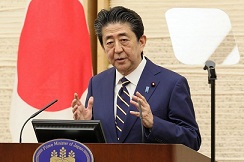
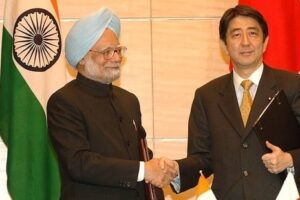

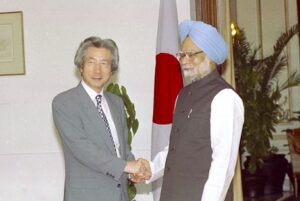

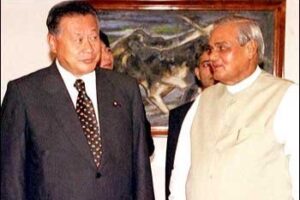





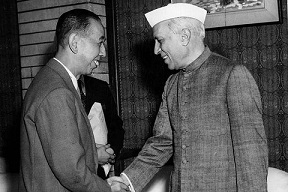










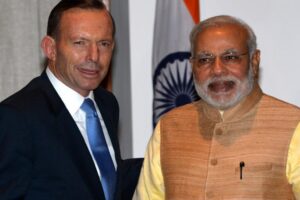





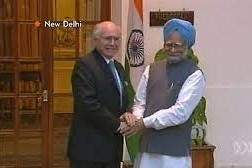

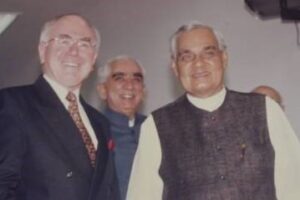






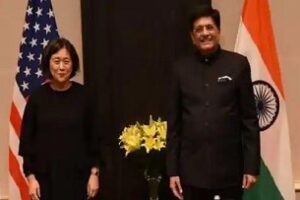
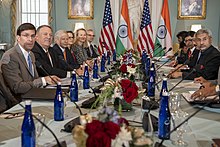



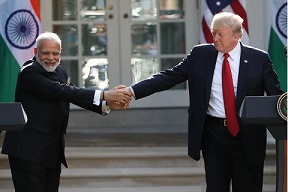


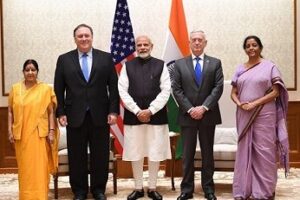

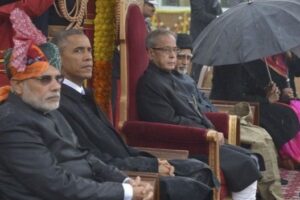

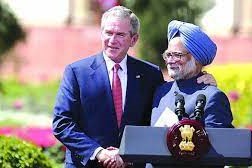
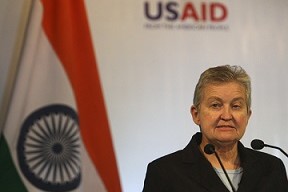
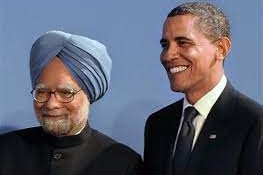


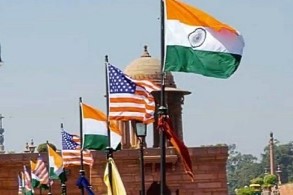
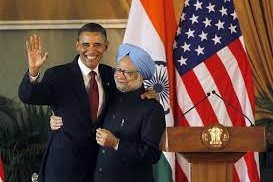



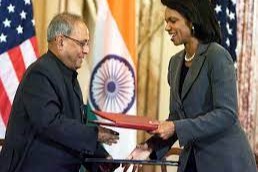






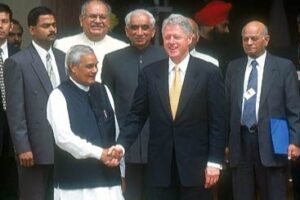


 onducted a total of five underground nuclear tests, breaking a 24-year self-imposed moratorium on nuclear testing. Pakistan followed, claiming 5 tests on May 28, 1998, and an additional test on May 30. The unannounced tests created a global storm of criticism, as well as a serious setback for decades of U.S. nuclear nonproliferation efforts in South Asia. On May 13, 1998, President Clinton imposed economic and military sanctions on India, mandated by Section 102 of the Arms Export Control Act (AECA), and applied the same sanctions to Pakistan on May 30. Some effects of the sanctions on India included: termination of $21 million in FY1998 economic development assistance; postponement of $1.7 billion in lending by the International Financial Institutions (IFI), as supported by the Group of Eight (G-8) leading industrial nations; prohibition on loans or credit from U.S. banks to the government of India; and termination of Foreign Military Sales under the Arms Export Control Act. Humanitarian assistance, food, or other agricultural commodities are excepted from sanctions under the law.
onducted a total of five underground nuclear tests, breaking a 24-year self-imposed moratorium on nuclear testing. Pakistan followed, claiming 5 tests on May 28, 1998, and an additional test on May 30. The unannounced tests created a global storm of criticism, as well as a serious setback for decades of U.S. nuclear nonproliferation efforts in South Asia. On May 13, 1998, President Clinton imposed economic and military sanctions on India, mandated by Section 102 of the Arms Export Control Act (AECA), and applied the same sanctions to Pakistan on May 30. Some effects of the sanctions on India included: termination of $21 million in FY1998 economic development assistance; postponement of $1.7 billion in lending by the International Financial Institutions (IFI), as supported by the Group of Eight (G-8) leading industrial nations; prohibition on loans or credit from U.S. banks to the government of India; and termination of Foreign Military Sales under the Arms Export Control Act. Humanitarian assistance, food, or other agricultural commodities are excepted from sanctions under the law. 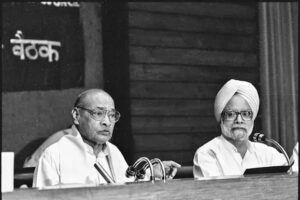







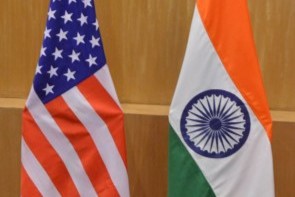




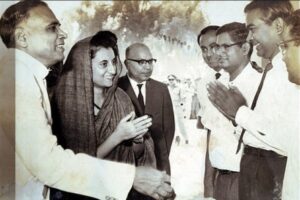



 The first ministerial level meeting of QUAD was held on the sidelines of the United Nations General Assembly in New York. Before this, the QUAD had
The first ministerial level meeting of QUAD was held on the sidelines of the United Nations General Assembly in New York. Before this, the QUAD had AusIndEx is an exercise between India and Australia which was first held in 2015.The Australian
AusIndEx is an exercise between India and Australia which was first held in 2015.The Australian 







 On recommendations of the Japanese government, the four countries met at Manila, Philippines for ASEAN Regional Forum (ARF) originally, but also ended up having a meeting of what we call the first meeting of four nation states on issues of
On recommendations of the Japanese government, the four countries met at Manila, Philippines for ASEAN Regional Forum (ARF) originally, but also ended up having a meeting of what we call the first meeting of four nation states on issues of  On his official visit to India, Japanese PM Mr. Shinzo Abe reinforced the ties of two nations, i.e., Japan and India with his famous speech about
On his official visit to India, Japanese PM Mr. Shinzo Abe reinforced the ties of two nations, i.e., Japan and India with his famous speech about  In 2007, Japanese President Shinzo Abe resigned from his post citing health reasons. This had a significant impact on QUAD as he was the architect & advocate of QUAD. His successor, Yasuo Fukuda, did not take up QUAD with such zeal leading to dormancy of the forum. (
In 2007, Japanese President Shinzo Abe resigned from his post citing health reasons. This had a significant impact on QUAD as he was the architect & advocate of QUAD. His successor, Yasuo Fukuda, did not take up QUAD with such zeal leading to dormancy of the forum. ( Japan earthquake and tsunami of 2011, also called Great Sendai Earthquake or Great Tōhoku Earthquake, was a 9.0 magnitude earthquake which struck below the floor of the Western Pacific at 2:49 PM. The powerful earthquake affected the northeastern coast of Honshu, Japan’s main island, and also initiated a series of large tsunami waves that devastated coastal areas of Japan, which also led to a major nuclear accident. Japan received aid from India, US, Australia as well as other countries. US Navy aircraft carrier was dispatched to the area and Australia sent search-and-rescue teams.
Japan earthquake and tsunami of 2011, also called Great Sendai Earthquake or Great Tōhoku Earthquake, was a 9.0 magnitude earthquake which struck below the floor of the Western Pacific at 2:49 PM. The powerful earthquake affected the northeastern coast of Honshu, Japan’s main island, and also initiated a series of large tsunami waves that devastated coastal areas of Japan, which also led to a major nuclear accident. Japan received aid from India, US, Australia as well as other countries. US Navy aircraft carrier was dispatched to the area and Australia sent search-and-rescue teams. 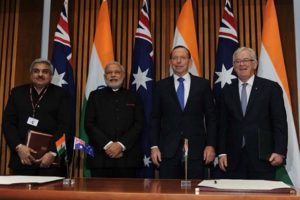 India and Australia signed the
India and Australia signed the  The India-Japan Agreement for Cooperation in the Peaceful Uses of Nuclear Energy was signed on 11 November, 2016 and came into force on 20 July, 2017 which was representative of strengthening ties between India and Japan. Diplomatic notes were exchanged between Dr. S. Jaishankar and H.E. Mr. Kenji Hiramatsu, Ambassador of Japan to India. (
The India-Japan Agreement for Cooperation in the Peaceful Uses of Nuclear Energy was signed on 11 November, 2016 and came into force on 20 July, 2017 which was representative of strengthening ties between India and Japan. Diplomatic notes were exchanged between Dr. S. Jaishankar and H.E. Mr. Kenji Hiramatsu, Ambassador of Japan to India. ( The foreign ministry
The foreign ministry The Officials of QUAD member countries met in Singapore on November 15, 2018 for consultation on regional & global issues of common interest. The main discussion revolved around connectivity, sustainable development, counter-terrorism, maritime and cyber security, with the view to promote peace, stability and prosperity in the
The Officials of QUAD member countries met in Singapore on November 15, 2018 for consultation on regional & global issues of common interest. The main discussion revolved around connectivity, sustainable development, counter-terrorism, maritime and cyber security, with the view to promote peace, stability and prosperity in the  The 23rd edition of trilateral Malabar maritime exercise between India, US and Japan took place on 26 September- 04 October, 2019 off the coast of Japan.
The 23rd edition of trilateral Malabar maritime exercise between India, US and Japan took place on 26 September- 04 October, 2019 off the coast of Japan.  After the first ministerial level meeting of QUAD in September, 2019, the senior officials of US, Japan, India and Australia again met for consultations in Bangkok on the margins of the East Asia Summit. Statements were issued separately by the four countries. Indian Ministry of External Affairs said “In statements issued separately by the four countries, MEA said, “proceeding from the strategic guidance of their Ministers, who met in New York City on the sidelines of the UN General Assembly recently, the officials exchanged views on ongoing and additional practical cooperation in the areas of connectivity and infrastructure development, and security matters, including counterterrorism, cyber and maritime security, with a view to promoting peace, security, stability, prosperity in the Indo-Pacific region.”
After the first ministerial level meeting of QUAD in September, 2019, the senior officials of US, Japan, India and Australia again met for consultations in Bangkok on the margins of the East Asia Summit. Statements were issued separately by the four countries. Indian Ministry of External Affairs said “In statements issued separately by the four countries, MEA said, “proceeding from the strategic guidance of their Ministers, who met in New York City on the sidelines of the UN General Assembly recently, the officials exchanged views on ongoing and additional practical cooperation in the areas of connectivity and infrastructure development, and security matters, including counterterrorism, cyber and maritime security, with a view to promoting peace, security, stability, prosperity in the Indo-Pacific region.” US 2+2 Ministerial Dialogue was held on 18 December, 2019, in Washington DC. Secretary of State Michael R. Pompeo and Secretary of Defense Mark T. Esper will host Indian Minister of External Affairs Dr. S. Jaishankar and Minister of Defense Shri Rajnath Singh. The discussion focussed on deepening bilateral strategic and defense cooperation, exchanging perspectives on global developments, and our shared leadership in the Indo-Pacific region.The two democracies signed the Industrial Security Annex before the 2+2 Dialogue. Assessments of the situation in Afghanistan, Pakistan, Nepal, Sri Lanka, and the Indian Ocean region in general were shared between both countries. (
US 2+2 Ministerial Dialogue was held on 18 December, 2019, in Washington DC. Secretary of State Michael R. Pompeo and Secretary of Defense Mark T. Esper will host Indian Minister of External Affairs Dr. S. Jaishankar and Minister of Defense Shri Rajnath Singh. The discussion focussed on deepening bilateral strategic and defense cooperation, exchanging perspectives on global developments, and our shared leadership in the Indo-Pacific region.The two democracies signed the Industrial Security Annex before the 2+2 Dialogue. Assessments of the situation in Afghanistan, Pakistan, Nepal, Sri Lanka, and the Indian Ocean region in general were shared between both countries. ( The foreign ministers of QUAD continued their discussions from the last ministerial level meeting in 2019, on 6 October, 2020. While there was no joint statement released, all countries issued individual readouts. As per the issue readout by India, the discussion called for a coordinated response to the challenges including financial problems emanating from the pandemic, best practices to combat Covid-19, increasing the resilience of supply chains, and enhancing access to affordable vaccines, medicines and medical equipment. There was also a focus on maintaining stability in the Indo-Pacific region amidst growing tensions. Australian media release mentions “We emphasised that, especially during a pandemic, it was vital that states work to ease tensions and avoid exacerbating long-standing disputes, work to counter disinformation, and refrain from malicious cyberspace activity. Ministers reiterated that states cannot assert maritime claims that are inconsistent with international law, particularly the United Nations Convention on the Law of the Sea (UNCLOS).”
The foreign ministers of QUAD continued their discussions from the last ministerial level meeting in 2019, on 6 October, 2020. While there was no joint statement released, all countries issued individual readouts. As per the issue readout by India, the discussion called for a coordinated response to the challenges including financial problems emanating from the pandemic, best practices to combat Covid-19, increasing the resilience of supply chains, and enhancing access to affordable vaccines, medicines and medical equipment. There was also a focus on maintaining stability in the Indo-Pacific region amidst growing tensions. Australian media release mentions “We emphasised that, especially during a pandemic, it was vital that states work to ease tensions and avoid exacerbating long-standing disputes, work to counter disinformation, and refrain from malicious cyberspace activity. Ministers reiterated that states cannot assert maritime claims that are inconsistent with international law, particularly the United Nations Convention on the Law of the Sea (UNCLOS).” On September 24, President Biden hosted Prime Minister Scott Morrison of Australia, Prime Minister Narendra Modi of India, and Prime Minister Yoshihide Suga of Japan at the White House for the first-ever in-person Leaders’ Summit of the QUAD. The leaders released a Joint Statement which summarised their dialogue and future course of action. The regional security of the Indo-Pacific and strong confidence in the ASEAN remained on the focus along with response to the Pandemic.
On September 24, President Biden hosted Prime Minister Scott Morrison of Australia, Prime Minister Narendra Modi of India, and Prime Minister Yoshihide Suga of Japan at the White House for the first-ever in-person Leaders’ Summit of the QUAD. The leaders released a Joint Statement which summarised their dialogue and future course of action. The regional security of the Indo-Pacific and strong confidence in the ASEAN remained on the focus along with response to the Pandemic.  The QUAD Vaccine Partnership was announced at the first QUAD Summit on 12 March 2021 where QUAD countries agreed to deliver 1.2 billion vaccine doses globally. The aim was to expand and finance vaccine manufacturing and equipping the Indo-Pacific to build resilience against Covid-19. The launch of a senior-level QUAD Vaccine Experts Group, comprised of top scientists and officials from all QUAD member governments was also spearheaded.
The QUAD Vaccine Partnership was announced at the first QUAD Summit on 12 March 2021 where QUAD countries agreed to deliver 1.2 billion vaccine doses globally. The aim was to expand and finance vaccine manufacturing and equipping the Indo-Pacific to build resilience against Covid-19. The launch of a senior-level QUAD Vaccine Experts Group, comprised of top scientists and officials from all QUAD member governments was also spearheaded.  Although the Tsunami Core group had to be disbanded on fulfilment of its purpose, however the quadrilateral template that formed remained intact as a successful scaffolding of four countries, as stated by authors Patrick Gerard Buchan and Benjamin Rimland in their diplomatic brief about QUAD ( you can access the brief at
Although the Tsunami Core group had to be disbanded on fulfilment of its purpose, however the quadrilateral template that formed remained intact as a successful scaffolding of four countries, as stated by authors Patrick Gerard Buchan and Benjamin Rimland in their diplomatic brief about QUAD ( you can access the brief at  Secretary of State Colin Powell stated that the Core Tsunami Group was to be disbanded and folded and clubbed with the broader United Nations led Relief Operations. In a Tsunami Relief Conference in Jakarta, Secretary Powell stated that
Secretary of State Colin Powell stated that the Core Tsunami Group was to be disbanded and folded and clubbed with the broader United Nations led Relief Operations. In a Tsunami Relief Conference in Jakarta, Secretary Powell stated that  Soon after the Earthquake and Tsunami crisis, humanitarian reliefs by countries, viz., US, India, Japan, and Australia started to help the 13 havoc-stricken countries. The US initially promised $ 35 Millions in aid. However, on 29
Soon after the Earthquake and Tsunami crisis, humanitarian reliefs by countries, viz., US, India, Japan, and Australia started to help the 13 havoc-stricken countries. The US initially promised $ 35 Millions in aid. However, on 29 At 7:59AM local time, an earthquake of 9.1 magnitude (undersea) hit the coast of Sumatra, an Indonesian island. As a result of the same, massive waves of Tsunami triggered by the earthquake wreaked havoc for 7 hours across the Indian Ocean and to the coastal areas as far away as East Africa. The infamous Tsunami killed around 225,000 people, with people reporting the height of waves to be as high as 9 metres, i.e., 30 feet. Indonesia, Srilanka, India, Maldives, Thailand sustained horrendously massive damage, with the death toll exceeding 200,000 in Northern Sumatra’s Ache province alone. A great many people, i.e., around tens of thousands were found dead or missing in Srilanka and India, mostly from Andaman and Nicobar Islands of Indian territory. Maldives, being a low-lying country, also reported casualties in hundreds and more, with several non-Asian tourists reported dead or missing who were vacationing. Lack of food, water, medicines burgeoned the numbers of casualties, with the relief workers finding it difficult to reach the remotest areas where roads were destroyed or civil war raged. Long-term environmental damage ensued too, as both natural and man-made resources got demolished and diminished.
At 7:59AM local time, an earthquake of 9.1 magnitude (undersea) hit the coast of Sumatra, an Indonesian island. As a result of the same, massive waves of Tsunami triggered by the earthquake wreaked havoc for 7 hours across the Indian Ocean and to the coastal areas as far away as East Africa. The infamous Tsunami killed around 225,000 people, with people reporting the height of waves to be as high as 9 metres, i.e., 30 feet. Indonesia, Srilanka, India, Maldives, Thailand sustained horrendously massive damage, with the death toll exceeding 200,000 in Northern Sumatra’s Ache province alone. A great many people, i.e., around tens of thousands were found dead or missing in Srilanka and India, mostly from Andaman and Nicobar Islands of Indian territory. Maldives, being a low-lying country, also reported casualties in hundreds and more, with several non-Asian tourists reported dead or missing who were vacationing. Lack of food, water, medicines burgeoned the numbers of casualties, with the relief workers finding it difficult to reach the remotest areas where roads were destroyed or civil war raged. Long-term environmental damage ensued too, as both natural and man-made resources got demolished and diminished.
No responses yet